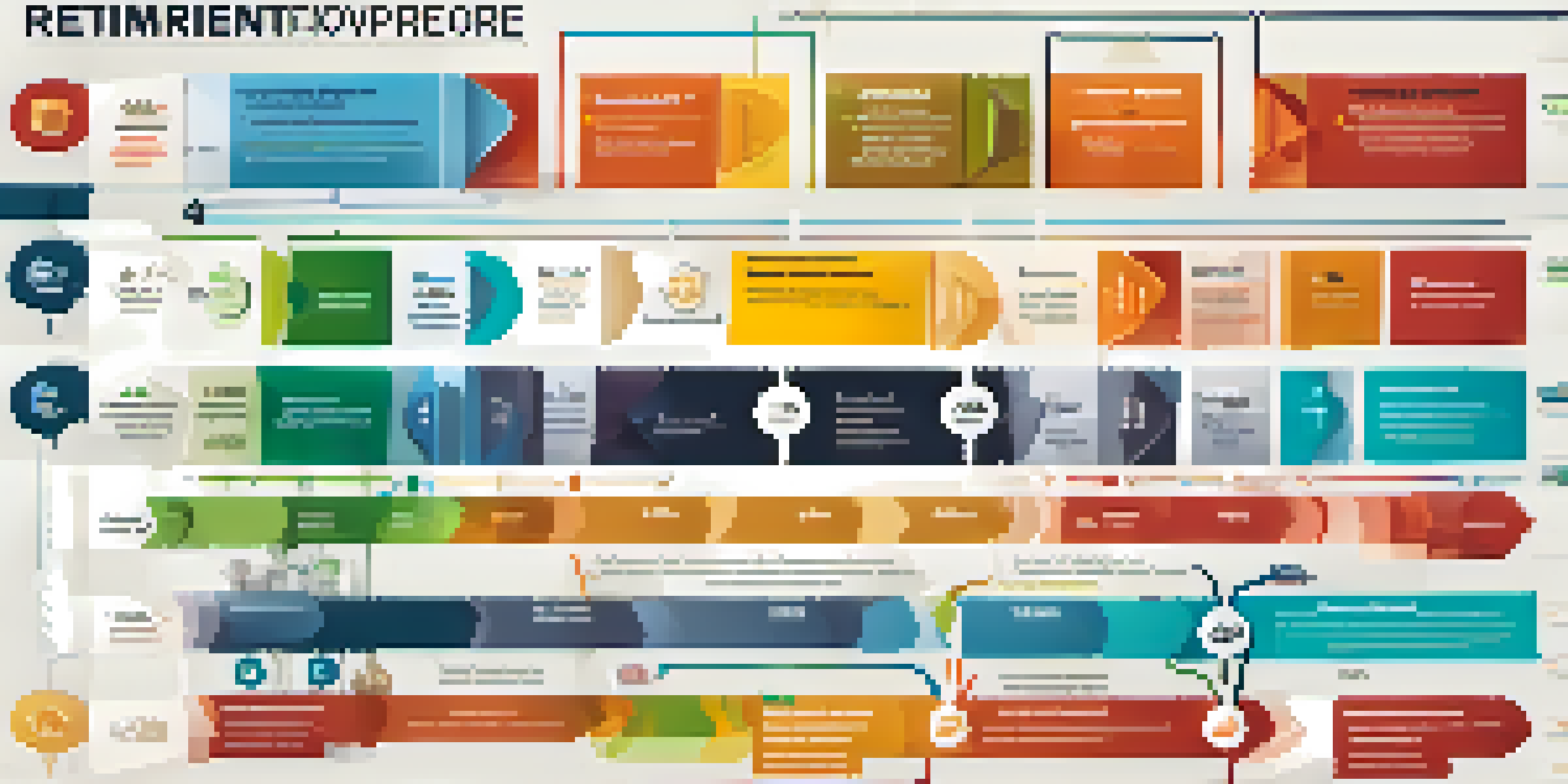Understanding the 60-Day Rule for Retirement Rollovers

What Is the 60-Day Rule for Retirement Rollovers?
The 60-day rule is a crucial guideline set by the IRS for retirement account rollovers. Essentially, it allows you to move funds from one retirement account to another without facing immediate tax penalties. This rule states that you have 60 days from the time you receive your distribution to deposit the funds into another eligible retirement account.
It's not how much money you make, but how much money you keep, and how hard it works for you.
Understanding this rule is vital because failing to meet the deadline can result in taxes and penalties on the distribution. It’s like holding onto a hot potato; if you don’t pass it along in time, you might end up with a mess! Therefore, knowing the ins and outs of this guideline can help you make better financial decisions.
In summary, the 60-day rule provides a window of opportunity for individuals looking to consolidate or change retirement accounts. However, it’s essential to adhere strictly to the timeline to avoid complications with the IRS.
Why You Might Need a Rollover
There are several reasons why someone may want to execute a retirement rollover. For instance, changing jobs often prompts individuals to roll over their 401(k) into an IRA or a new employer's plan. This can help maintain the tax-deferred status of your retirement funds while providing more control over your investment choices.

Additionally, consolidating multiple retirement accounts into one can make your financial life simpler. Imagine trying to juggle several balls at once; it can get overwhelming. By rolling over accounts, you streamline your investments, making it easier to track performance and fees.
Understanding the 60-Day Rule
The 60-day rule allows you to transfer retirement funds without tax penalties, provided you deposit them into another eligible account within that timeframe.
Ultimately, a rollover can be a strategic move to enhance your retirement savings. However, understanding the 60-day rule is crucial to ensure that you don’t inadvertently trigger taxes or penalties during this process.
The Different Types of Rollovers
When it comes to retirement rollovers, there are two primary types: direct and indirect rollovers. A direct rollover involves transferring funds directly from one account to another, ensuring you never touch the money. This method is often preferred because it eliminates the risk of missing the 60-day deadline.
The best time to plant a tree was twenty years ago. The second best time is now.
On the other hand, an indirect rollover is when you receive the funds first and then deposit them into another retirement account. While this gives you greater flexibility, it also places the responsibility on you to meet that 60-day timeframe. If you miss it, you could face tax consequences.
Choosing the right type of rollover depends on your specific financial situation and preferences. Just remember that with indirect rollovers, timing is everything!
Consequences of Missing the 60-Day Deadline
Missing the 60-day deadline can lead to severe financial repercussions. If you fail to deposit your funds into a qualifying account within this timeframe, the IRS considers the distribution taxable income. This means you’ll owe taxes on the amount withdrawn, which can significantly impact your financial situation.
Moreover, if you're under 59½ years old, you may also face an additional 10% early withdrawal penalty. This is like a double whammy: not only do you owe taxes, but you also pay a penalty for accessing your retirement funds prematurely.
Types of Rollovers Explained
There are direct and indirect rollovers; direct rollovers transfer funds without you touching them, while indirect rollovers give you the responsibility to meet the 60-day deadline.
To avoid these pitfalls, it’s crucial to stay organized and keep track of your rollover timelines. Setting reminders can help you stay on top of this important deadline!
Exceptions to the 60-Day Rule
While the 60-day rule is generally strict, certain exceptions can apply. For example, if you're affected by a disaster or serious illness, the IRS may offer relief, allowing you more time to complete your rollover. It’s like getting a rain check at your favorite restaurant; life can throw curveballs, and sometimes you need a little extra time.
Additionally, if you’re involved in a tax-free transfer between retirement plans, such as a 401(k) to another 401(k), the 60-day rule may not apply. This can provide more flexibility for individuals looking to manage their retirement funds without the added stress of strict deadlines.
However, these exceptions aren't automatic, and you’ll likely need to provide documentation proving your circumstances. Always consult with a financial advisor or tax professional to navigate these complexities.
How to Complete a Rollover Smoothly
Completing a rollover smoothly requires careful planning and organization. Start by ensuring you understand the type of retirement account you're rolling over from and to, as well as the specific rules governing each. This groundwork will help you avoid mistakes that could lead to tax penalties.
Next, initiate the rollover process as soon as possible to give yourself ample time before the 60-day deadline. If you're doing an indirect rollover, consider depositing the funds into your new account within a week of receiving them. This proactive approach can alleviate last-minute stress.
Avoiding Penalties is Key
Missing the 60-day deadline can result in taxes and possible penalties, making it essential to stay organized and meet the timelines.
Lastly, keep thorough records of all transactions related to the rollover. Documentation is your best friend, especially if you need to provide proof of your rollover to the IRS later on.
Consulting a Financial Advisor
When navigating the complexities of retirement rollovers, consulting a financial advisor can be incredibly beneficial. These professionals can provide personalized advice tailored to your financial situation and help you understand the implications of the 60-day rule. They can also guide you through the entire rollover process, ensuring everything is done correctly.
Moreover, a financial advisor can help you explore your investment options within your new retirement account. With their expertise, you can make informed decisions that align with your long-term financial goals.

In short, partnering with a financial advisor can take the guesswork out of retirement rollovers, allowing you to focus on what truly matters: securing your financial future.